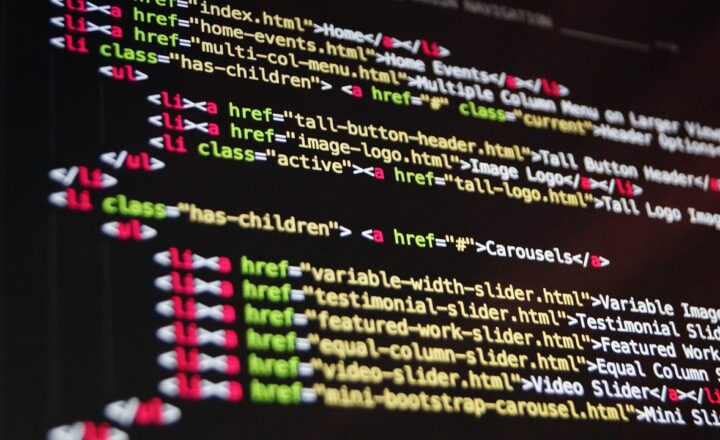How the Internet Is Making Education More Accessible for Learners of All Ages
November 17, 2024

In an era defined by rapid technological advances, the internet has emerged as a powerful tool that is revolutionizing education. Gone are the days when learning was confined to the four walls of a classroom; the digital realm has opened up countless opportunities for learners of all ages, backgrounds, and abilities. Today, education is no longer a privilege reserved for the select few—it is becoming increasingly accessible for everyone.
1. The Shift to Online Learning
The convenience of online learning platforms has fundamentally changed how education is delivered. With just a few clicks, learners can access a wealth of resources, courses, and lectures from prestigious institutions around the globe. Websites like Coursera, edX, and Khan Academy offer various subjects, allowing students to learn at their own pace, anytime and anywhere.
This shift also democratizes education: no longer does a student need to be physically present in a classroom to participate in world-class learning experiences. Key benefits of online learning include:
- Flexibility: Students can create their schedules around work and family commitments, making it easier to pursue their education.
- Diverse Learning Options: The array of courses available online caters to a wide range of interests and career aspirations, from coding to cooking.
- Cost-Effectiveness: Many online courses are significantly less expensive than traditional education pathways, with some being completely free.
2. Bridging the Gap in Remote Areas
For individuals living in remote or underserved regions, the internet provides access to educational resources that would otherwise be out of reach. Many communities may lack the infrastructure for traditional schooling, from qualified teachers to physical buildings.
Online education has the potential to bridge these gaps, allowing learners from isolated areas to connect with top-quality instructors and materials. Initiatives such as satellite internet and mobile learning apps further enhance accessibility, providing even the most distant learners with the opportunity to engage in education.
Some notable examples include:
- Zambia’s eLearning Project: This initiative brought educational content to rural schools through e-learning platforms powered by solar energy.
- Khan Academy’s Offline Access: By making content downloadable, Khan Academy enabled students in areas with limited internet access to benefit from educational resources.
3. Lifelong Learning and Skill Development
In today’s fast-paced world, the concept of lifelong learning has gained traction as professionals seek to constantly update their skills and knowledge. The internet facilitates this through diverse online course offerings, ensuring that learners can adapt to ever-changing job markets.
Learners of all ages can access resources tailored to personal and professional development, from coding bootcamps to language learning apps. Platforms like LinkedIn Learning, Udemy, and Skillshare provide a multitude of options for acquiring new skills:
- Real-World Skill Integration: Many courses are designed with input from industry professionals, ensuring that the content is relevant to current job demands.
- Networking Opportunities: Online learning platforms often host forums and discussion groups, allowing students to connect and collaborate with peers across the globe.
These platforms create a vibrant ecosystem of learning where age is no barrier to gaining knowledge and skills.
4. Addressing Learning Differences
Education is not one-size-fits-all, and the internet has paved the way for tailored learning experiences that address individual learners’ needs. This is particularly beneficial for students with learning disabilities, who may struggle in traditional classroom environments.
Online resources often come equipped with customized learning strategies, enabling students to learn in ways that suit them best. Platforms equipped with adaptive learning technologies use algorithms to track student progress and adjust course material accordingly, creating personalized learning pathways that empower students.
Some noteworthy tools include:
- Text-to-Speech Software: This assists students with reading disabilities by converting text into audio.
- Interactive Learning Tools: Gamification and interactive modules engage students through visual and auditory elements that cater to their diverse learning preferences.
Thanks to such innovative approaches, the educational landscape is evolving to be more inclusive and responsive to all learners.
5. The Future of Education
The internet’s role in making education more accessible is still evolving. As technology advances, new methods of learning will continue to emerge. Concepts like virtual reality (VR) and augmented reality (AR) promise to transform how educational content is delivered, creating immersive learning experiences that engage students in ways traditional methods cannot.
Moreover, the global community is coming together to address educational challenges through open-source learning platforms and collaborative initiatives. Projects such as WikiEducator and OpenStax provide open-access educational materials, further democratizing knowledge.
As we move forward, the crucial conversation will focus on ensuring equitable internet access for all, addressing the digital divide that still exists in many parts of the world.
Ensuring equal access will be vital to truly realize the potential of the internet in transforming education:
- Investing in infrastructure for rural communities.
- Creating affordable internet plans for low-income families.
- Promoting digital literacy programs to enable all learners to navigate online resources effectively.
Conclusion
The internet is reshaping the educational landscape, making learning more accessible than ever before. From online courses that bridge geographical gaps to platforms dedicated to lifelong learning and personalized education, the opportunities for learners are expanding. As we embrace these innovations, it is our collective responsibility to ensure everyone can access the wealth of knowledge available online. The future of education is bright, as it continues to become more inclusive, adaptive, and accessible for learners of all ages.
By harnessing the power of technology, we can foster a global community of lifelong learners, eager to explore new concepts and overcome barriers through knowledge.








